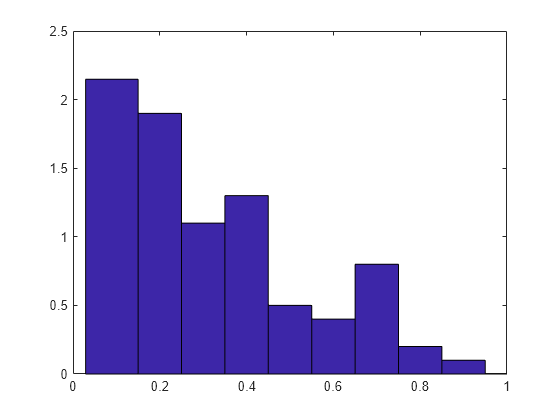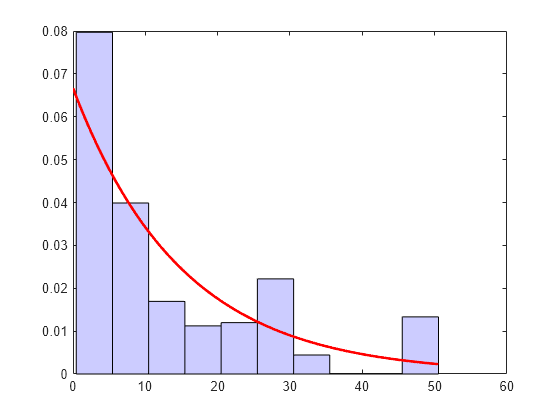ecdfhist
Histogram based on empirical cumulative distribution function
Syntax
Description
[ returns
the heights, n,c] =
ecdfhist(f,x)n, of histogram bars for 10 equally
spaced bins and the position of the bin centers, c.
ecdfhist computes the bar heights from the
increases in the empirical cumulative distribution function, f,
at evaluation points, x. It normalizes the bar
heights so that the area of the histogram is equal to 1. In contrast, histogram produces bars with heights
representing bin counts.
ecdfhist(___) plots the histogram bars using any of the input
argument combinations in the previous syntaxes.
Examples
Input Arguments
Output Arguments
Version History
Introduced before R2006a


